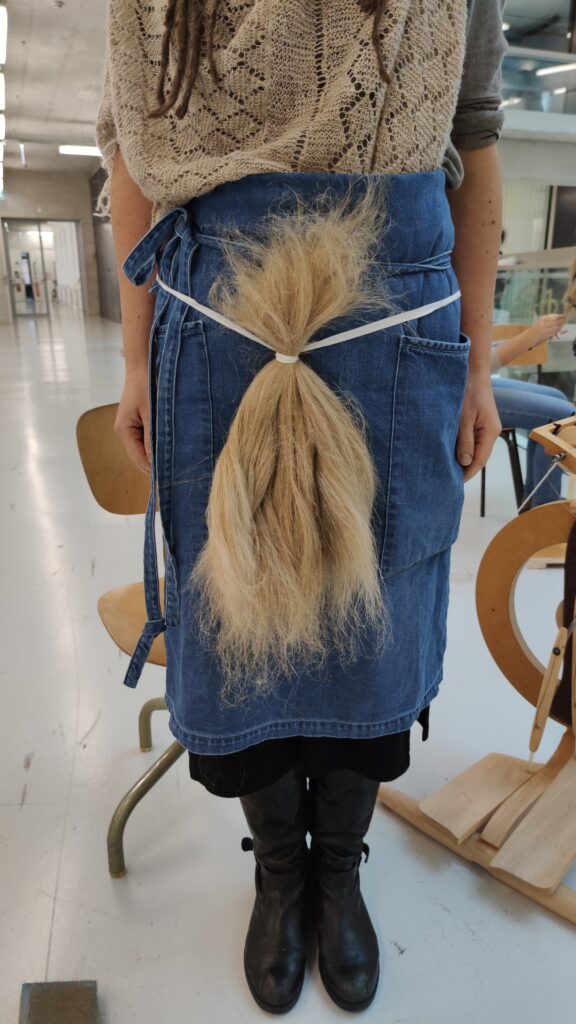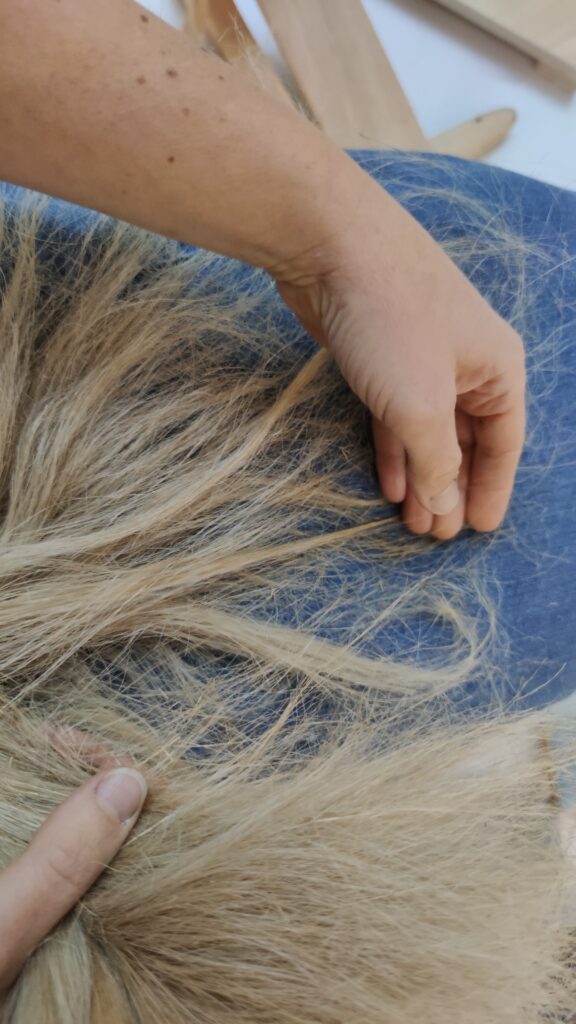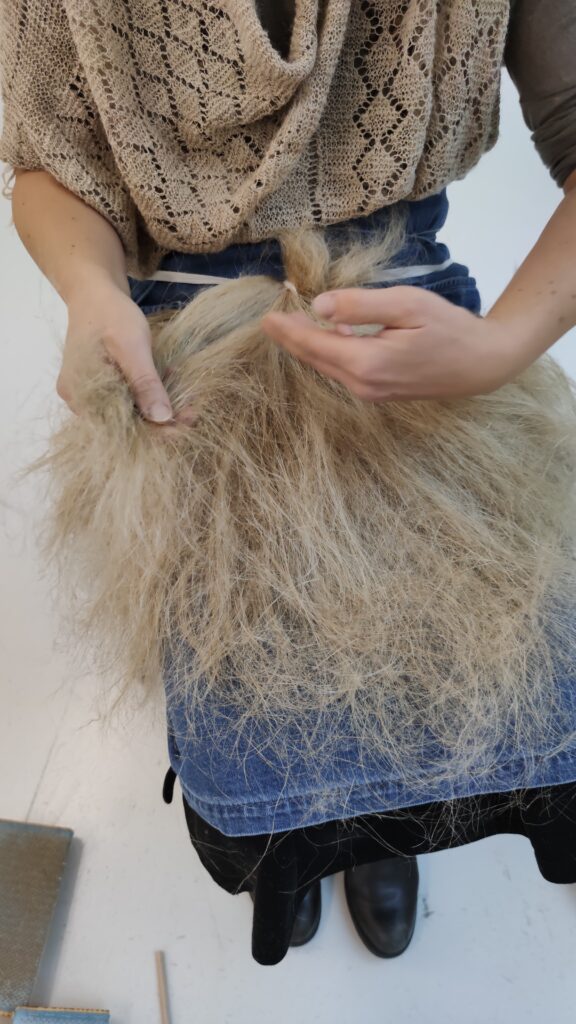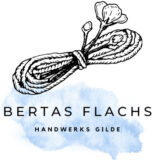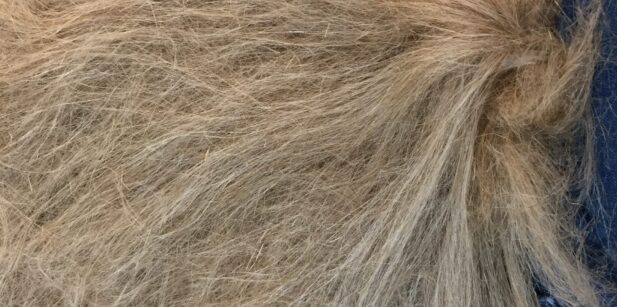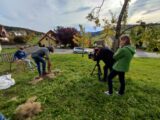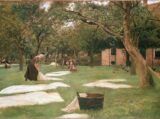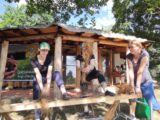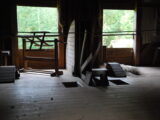Writing just a short article about distaffs and the correct construction of such a skirt is presumptuous. That is why this article is intended as a first insight into this broad field. There are almost as many different skirts and ways of spinning with them as there are spinners. Here I present (my) one type that I get on well with.
The long fibres that remain after hand carding are difficult or impossible to spin by hand. Too quickly you would have a terrible tangle of fibres on your lap. A distaff takes on the role of a silent servant, so to speak, keeping the fibres ready for us.
Skirts are no longer used in modern spinning and are therefore no longer produced. I use a broomstick that stands in a parasol stand and it works really well. But you can also be creative and come up with other variations. It is important to me that my skirt is mobile and that I can easily set it up at different distances from the spinning wheel.
Careful fanning helps with spinning
I now select a handful of my fibres and tie them tightly together in the upper quarter with a textile band (at least 2 metres long). Then I tie the bundle around my stomach. Now I fan out the fibres as finely as possible in many layers on my lap. The longer you take here, the better you can spin later. The idea behind this is that each fibre has contact with a few other fibres and a continuous supply is created when the fibres are pulled out.
Once the fan is finished on the lap, it can be transferred to the skirt with the ribbon that holds it together at the top. If my broomstick has a hole, I can thread the ribbon through the top. The fan is then placed loosely around the handle and secured with the ribbon.
What works is right
During the course of spinning, you have to adjust the tightness of the skirt band from time to time, so it is not a problem if you have tied it too tightly or too loosely at the beginning.
With this method, I orientate myself on the way the skirt was spun in the Mühlviertel. In many other countries, the skirts look completely different and are also built (tied) differently.
Generally speaking, don't be afraid of building skirts, it's much easier than you think and it doesn't have to win any beauty awards. The right thing is what works for you!
